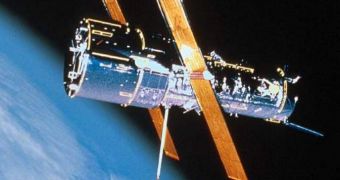A few days ago, NASA officials announced that the recent mishap that affected the Hubble Space Telescope on Saturday, September 27th, prevented the servicing mission scheduled for October 14th from taking place. Instead, the mission is currently moved to next year, until the problem is dealt with.
The Hubble trouble lies in the failure of a channel from the Hubble Control Unit/Science Data Formatter control system, the very one that transmits the collected data back to Earth. This forced the giant telescope to enter a “safe mode” and interrupt any undergoing observation. The experts predict that the problem will be fixed by the end of this week and that Hubble will be able to restart its deep space search. So, before the previously scheduled servicing mission can take place, the damaged control unit has to be replaced with a spare one provided by the Goddard Space Flight Center.
Preston Burch, Hubble’s program manager from Goddard, states that the replaceable control unit lies within easy reach for the astronauts, behind a bay door, so the whole operation should only take about two hours. It's too early to estimate whether this will affect the servicing mission's five scheduled activity-filled spacewalks, but the lead astronaut, John M. Grunsfeld, proved during training that he could repair the camera in only one spacewalk instead of the pre-established two. Full comprehension of the problem, the training of a new crew, the tests of the new unit and placing its installment among the mission's activities could take a number of weeks, according to Burch.
Thus, the mission cannot be attempted before Discovery, the backup rescue shuttle scheduled for launch on February 12th, is prepared. The now-failed service mission should have dived into space on October 14th for an 11-day service activity in order to repair Hubble's camera and spectrograph, replace its gyroscopes and batteries, as well as place new instruments aboard the 18-year old telescope.

 14 DAY TRIAL //
14 DAY TRIAL //